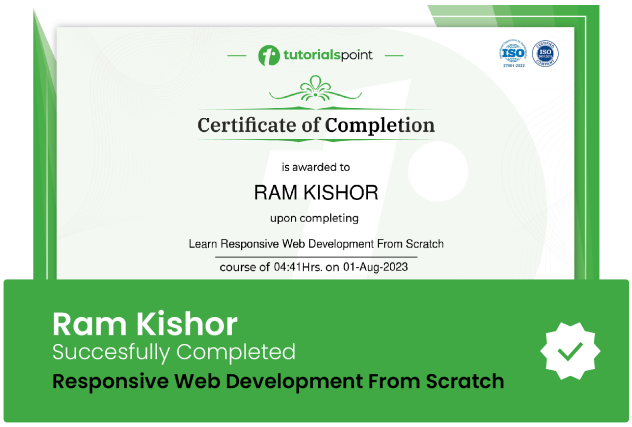SQL for Newcomers - The Full Mastery Course
A course to make you an SQL genius!
Lectures -123
Duration -11 hours

30-days Money-Back Guarantee
Get your team access to 10000+ top Tutorials Point courses anytime, anywhere.
Course Description
This course will teach you how to use SQL (Structured Query Language), a language so prominent for relational databases, databases such as MySQL, PostgreSQL, SQLlite and more.
SQL now is a great skill to have if you want to work as a data analyst, data scientist, BI developer, data engineer, database administrator or even a software developer/engineer, since all these jobs need to use databases and data in a daily basis.
I'm a beginner, is this course for me?
Sure! This course was done for beginners. Even students with experience in SQL may find it useful too to memorize some keywords and functions, as well as learning more about the bits they may miss.
Is there any prerequisites to attend this course?
The only thing you need is a PC or laptop with average performance and any operating system installed on. We'll be using Windows 10 for this course but the OS does not matter since the tech we'll be using is cross-platform and can work on Linux and Mac.
Who this course is for:
- Junior data analysts and scientists.
- Junior developers who need to work on relational databases.
- Undergraduate students who study relational databases in their curriculum.
- Anyone who's interested to learn SQL and add it to their resume.
Goals
What will you learn in this course:
- Able to select & filter data using SQL, fetch data for useful reports based on different requirements.
- Manipulate data by adding new records & modifying or deleting existing ones.
- Create & modify tables with setting constraints to columns.
- Learn some of the most useful built-in functions in SQL, as well as data type conversion.
- Join tables using different join types SQL provides.
- Brag about how cool they are knowing how to use SQL with their friends.
Prerequisites
What are the prerequisites for this course?
- Have a PC or laptop to work on. Your old clunky notebook will do.
- Can work on any operating system (Windows, Linux & MacOS).

Curriculum
Check out the detailed breakdown of what’s inside the course
Introduction
2 Lectures
-
Introduction 01:15 01:15
-
Tools Used in This Course 01:00 01:00
Setting Up Course Tools
8 Lectures

Browsing & Filtering Data
15 Lectures

Filter Data with AND, OR, NOT Operators
4 Lectures

Math Operations
4 Lectures

String Concatenation
2 Lectures

Tidy Up Your Results: Sorting, Alias Names, Limit Records
6 Lectures

NULL, DISTINCT & CASE Statements
5 Lectures

Functions in SQL: Multiple-Row Functions
10 Lectures

Functions in SQL: Single-Row Functions
8 Lectures

Nested Queries
1 Lectures

Casting & Data Conversion
6 Lectures

Combination Relationships
5 Lectures

Joins in SQL
8 Lectures

Data Manipulation (DML)
9 Lectures

SQL Data Definition Language (DDL)
23 Lectures

Access Control
6 Lectures

Instructor Details

Sameh Sharaf
eCourse Certificate
Use your certificate to make a career change or to advance in your current career.

Our students work
with the Best


































Related Video Courses
View MoreAnnual Membership
Become a valued member of Tutorials Point and enjoy unlimited access to our vast library of top-rated Video Courses
Subscribe now
Online Certifications
Master prominent technologies at full length and become a valued certified professional.
Explore Now


 Updated on Apr, 2024
Updated on Apr, 2024
 Language - English
Language - English
